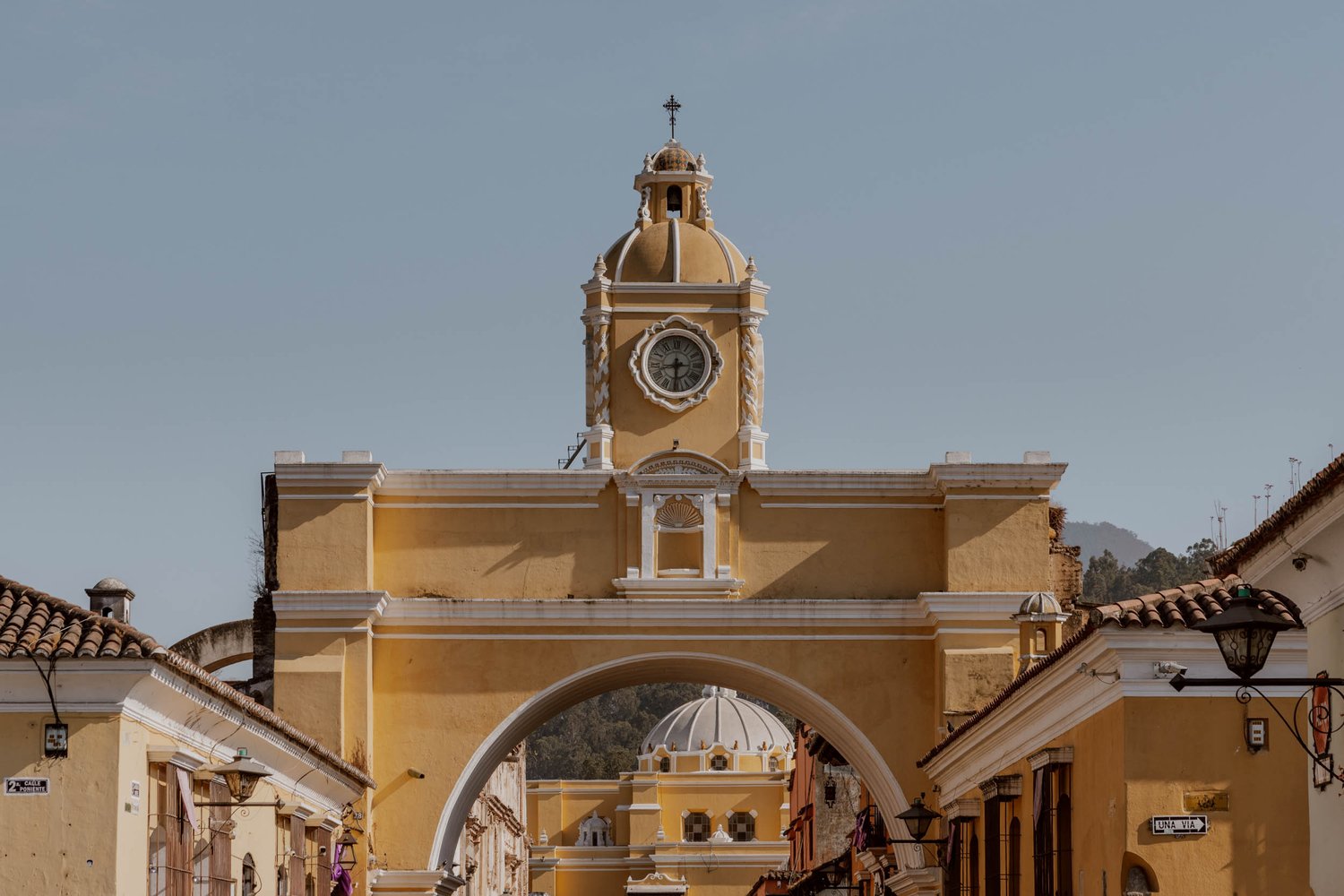At times, it feels like you can’t swing a cat without hitting a gorgeous ruin of an 17th or 18th century monastery, cathedral or convent in Antigua.
(take our word for it though, no need to procure your own cat).
There are a quite ridiculous number, both relative to the size of the place and to other colonial cities in Central America. Some are well-preserved, several are roofless and in a real state of disrepair, whilst others are slowly being restored to their former glories and host offices, museums, or hotels.
This, along with its alluring blend of slippery volcanic cobblestone streets, secret courtyards behind thick mahogany doors, and low-slung buildings splashed in shades of custard yellow and burgundy red, was a key factor in its designation as a UNESCO World Heritage site.
Rather than a historical quirk though, the disproportionate number of grand ecclesiastical ruins in the former Guatemalan capital is simply a reflection of the two key factors in this small city’s creation and fate: Antigua’s colonial status and its vulnerability to natural disasters.
Founded in the dip of a lush valley in 1543, surrounded by hills and a trio of volcanoes, the city was the seat of Spanish power in Central America for two centuries. At the time, the region encompassed territories we now know as several independent countries, and Santiago de los Caballeros de Guatemala – as Antigua was first known – was one of the richest places in the New World.
This led to the construction of grand religious buildings to demonstrate the influence of both the crown and the Catholic Church, as well as accommodate various orders of monks and nuns.
Yet, from the laying of the first stone, Antigua had a fatal flaw.
Click Here to Read the Full Original Article at blog…
